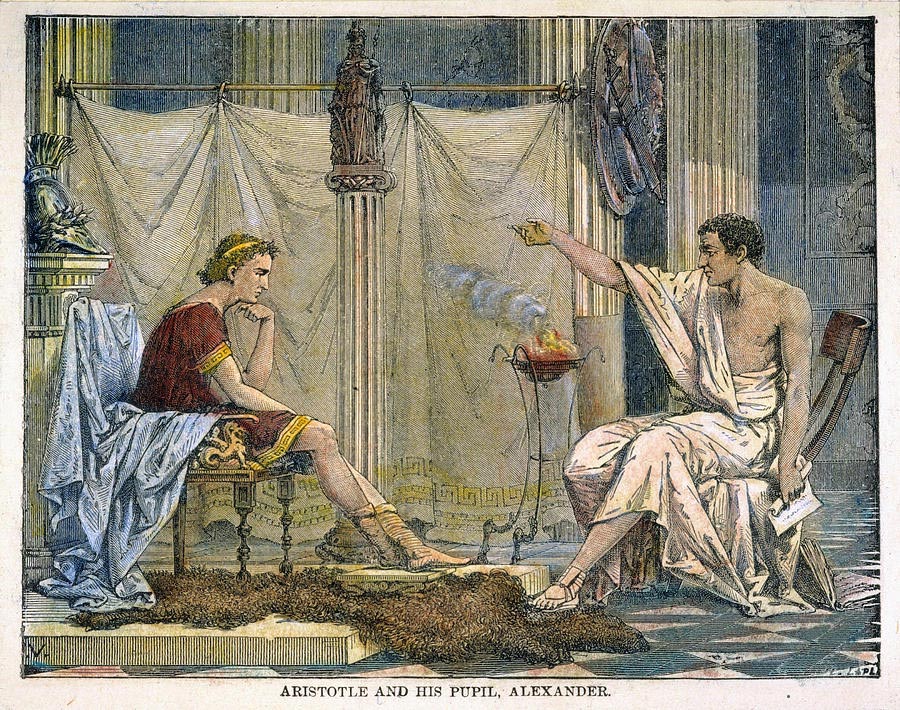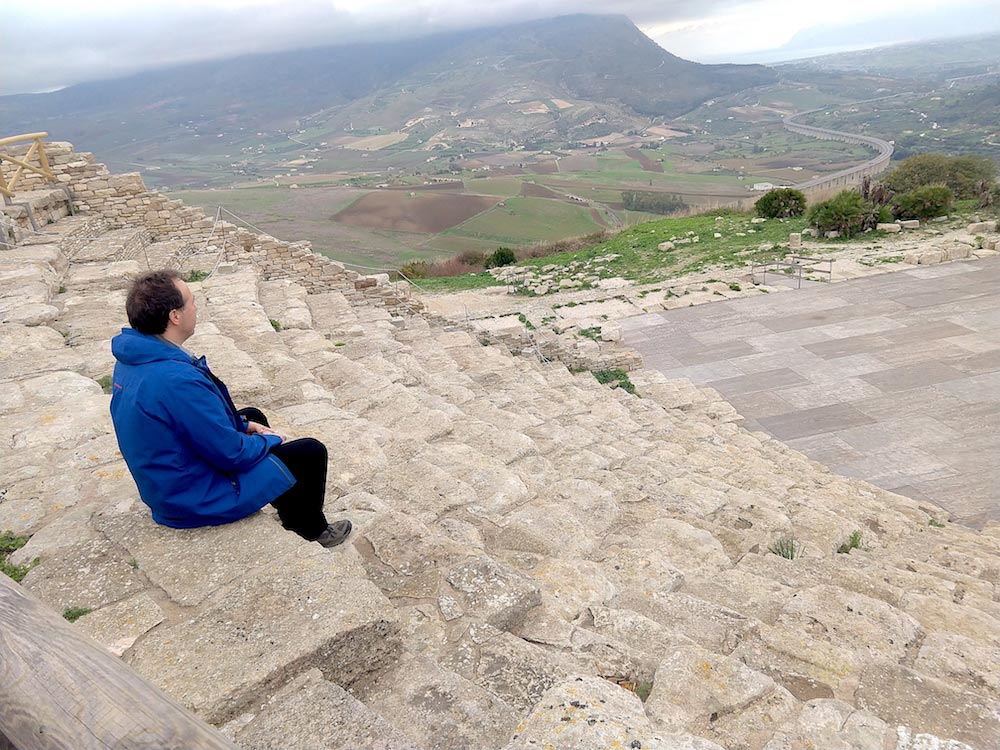[This article is from an 8-minute talk I gave to members of the Olympic Club on Sept 24, 2020, Rhetoric, Rhetoric, Rhetoric. I’ve added a few links and shared it here for members of the Olympic Club and the broader public.
BACKGROUND and SUMMARY: Civil discourse in the United States has eroded. As a nation and as inhabitants of a shared planet we face important issues. Some of those issues are existential. Now would be a good time for concerned citizens to become better public speakers and more critical listeners. Use this three-part playbook to prepare and present your talks and to critically evaluate speakers.
I’ve turned off comments but feel free to reach me directly or comment and share on social media.]
Rhetoric. Rhetoric. Rhetoric.
An 8 minute talk and an even quicker read. This unabridged version has a few areas I wasn’t able to include in my 8 minute talk.
We all aspire to be better public speakers. Creating compelling content is only one component of public speaking. Another component, OF COURSE, is the masterful delivery OF THAT content. It’s ALL about persuasion.
In this challenge, WE DO NOT STAND alone. Every person who has ever championed change or spoke in defense of the status quo faced this same challenge.
Training in the use of language for effective persuasion, at one time, was part of the citizen’s tool kit. Every citizen was expected to be capable of engaging in civil discourse and arguing effectively. After all, without this toolkit it would be difficult for citizens to stave off the inevitable injustices that would ensue. That was Ancient Greece. THIS, IS modern America and for most people the citizen’s toolkit, has yet to arrive. Injustices, however…
Fortunately, there is an ancient playbook we can use.
In 323 BCE Aristotle wrote a treatise on Rhetoric. He laid the foundation for the stirring speeches he would deliver. Stirring speeches over the 2 millennia following Aristotle use that same playbook. People from your history books and from your living memory. Abraham Lincoln, Winston Churchill, Pastor Martin Niemöller, Ronald Reagan, and Dr. Martin Luther King, Jr. There are the good. Mister (Fred) Rogers and the bad. Adolf Hitler.
Of course not all persuasive speakers who mastered rhetoric were male. Elizabeth Cady Stanton wrote Susan B. Anthony’s stirring speeches.
My speech today cracks open the Rhetorician’s playbook. My goal is to empower, YOU. Use these techniques and you will feel the difference. Your audience will feel the difference.
Okay – buckle up. Let’s take a quick ride through that playbook. Along the way I’ll demystify my seemingly redundant title. Rhetoric. Rhetoric. Rhetoric.

First up, Rhetoric for Persuasion.
Aristotle referred to Ethos (pronounced Eethoss), or persuasion by character and credibility. When Jennifer Aniston endorses a beauty product she lends her credibility to that brand. Ethos answers the question, “Why should I believe you.” Advertisers use this; it is effective. This speech is made more credible because I’m citing relevant experts and powerful speakers.
Logos (pronounced Lawgoss) is persuasion by logic. Logos is about the quality of the message itself. Is it logical and consistent and compelling? Does it make sense? Is there convincing evidence?
Pathos (pronounced Paythoss) is the appeal to emotions. When Sally Struthers appears on television alongside hungry children from Ethiopia and asks you if you would spare a little pocket change to feed a hungry child - that is pathos.
These 3 modes of persuasion, Ethos, Logos, and Pathos form the rhetorical triangle. We are most persuasive as speakers when we appeal to all three modes. Consider adding the rhetorical triangle to your speech writer’s checklist.
There is fourth mode, Kairos. Kairos is about having the right timing and approach for a given situation. I began working on this speech about one year ago. Then I packed it away. Other topics were more pressing. Now, given the current state of political discourse in Congress and in the public square, and the proximity to the election, NOW, the timing is right - Kairos. Think of Kairos as a continuum with degrees of “rightness” rather than a binary, right or wrong time. If I had an opportunity to reach a larger audience for my talk, then the imagined Kairosmeter would have ticked up a few levels. That opportunity did not materialize so I’m sharing my talk in the blogosphere.
We can learn by tuning our ears to the specific messages politicians and pundits use to persuade voters’ hearts and minds. We might not like all of what we hear though we can learn from much of it – listen as speakers appeal to ethos, logos, and pathos. Next time you look at advertising in print or video or television, examine the various appeals to logos, ethos, and pathos.
Next, Rhetoric for Process.
400 years after Aristotle, Cicero, the Roman orator and statesman, created a rhetorical education primer – De Inventione - “How to prepare and present public speeches.” These are known as the 5 canons. This, too, should be on your speaker’s checklist.
The first canon is Invention. This is where we generate and come up with the ideas and content that make up the substance we will present to our audience.
The second canon is Arrangement. This is where we organize and sequence our content in a way that makes sense for our audience and the presentation environment.
The third canon is Style. This is about taking our content and figuring out ways to make it clear and understandable. Style can help our ideas stick in the minds of our audience.
The fourth canon is Memory. This is all about preparation and being in command of our material and in command of ourselves. This used to be harder. Have you ever tried to present from a stack of papyrus scrolls?
And finally the canon of Delivery. This concerns using our voice and the rest of our body and nonverbal communication to present our ideas effectively.
Now, imagine you’re working on your next speech and you’ve gone through the 5 canons and you’ve diligently appealed to ethos, logos, and pathos. You are rehearsing your speech and someone listening in responds with a, meh. When that is the case it’s time to deploy Rhetoric for impact.
Finally, Rhetoric for Impact.
This third reference to Rhetoric is perhaps the most well-known. It concerns using rhetorical devices to add dramatic impact to your speech. There are more than 60 traditional rhetorical devices that fall into categories of: Sonic devices, Word repetition, Word relation, Discourse level, and Irony and imagery .
Here is a quick reference guide, A Handbook of Rhetorical Devices.
Some rhetorical devices, we are well familiar with. Who among us has not asked a rhetorical question?
And, the use of metaphor so pervades our everyday language. It’s the steering wheel we hardly notice, even as we use it.
Another familiar rhetorical device is the Onomatopoeia. Recall, that is a word that captures or approximates the sound of what it describes, such as buzz, hiss, and boom.
We all our guilty of using Hyperbole, an overstatement characterized by exaggerated language. I’ve been dying to give this speech and write this blog post.
Other frequently used rhetorical devices include nostalgia, anecdote, simile, irony, rhyme, tricolon, and oxymoron.
In time remaining I want to share a few less frequently used rhetorical devices.
Anadiplosis (anna diplosis) repeats the last word of one clause, or sentence at the beginning of the next. For example “Without rhetorical devices, we cannot have impactful language. And without impactful language our message may be lost.” Here is a Direct TV commercial that makes use of Anadiplosis.
Parallelism – this is where you repeat a grammatical structure. President John F. Kennedy's inaugural address is stuffed with rhetorical devices. Here is an example of his use of parallelism.
"Let every nation know, whether it wishes us well or ill, that we shall pay any price, bear any burden, meet any hardship, support any friend, oppose ANY foe, to assure the survival and the success of liberty.” - PRESIDENT JOHN F. KENNEDY
This next rhetorical device is Hypophora. With Hypophora you raise a question then proceed to answer it. It creates the feeling of a dialogue and can make your content appear more logical.
Here is an example: “Why bother studying rhetoric I hear you ask? Well, because rhetoric will make you a more powerful speaker. More powerful speakers have more persuasion over their audience. When you have more persuasion over your audience your ideas gain more support. And, of course you want your ideas supported.”
Of course the use of hypophora could be less exaggerated. For example, “In the middle of a pandemic should you wear a mask in public places? The answer is YES.”
There you have it, gentlemen (and ladies). A quick trip through the Rhetorician’s playbook.
Rhetoric for Persuasion. Rhetoric for Process. And Rhetoric for Impact.
Rhetoric. Rhetoric. Rhetoric.
Your best speeches lie ahead of you, not behind you. That, by the way, is another rhetorical device, Antithesis. This is where where you introduce a word, phrase, or sentence that offers a striking contrast. Recall in, “Tale of Two Cities” where Charles Dickens shares, “It was the best of times, it was the worst of times….”
I’ve given you a path to explore and improve your speaking prowess.
So, please, gentlemen (and ladies). Lean on two-thousand years of proven techniques. Techniques that masters of persuasion, such as Churchill, Dr. King, Jobs, and Sanders, and others have used to win wars and hearts and minds and customers.
Dare to explore rhetoric.
And move from speaker to persuasive rhetorician.
I’ll see YOU in the forum.
about the author
I see greater potential for all of us, as individuals, organizations, and even nations. This belief is what guides my writing and my work.
Greg is a virtual chief marketing officer to small and medium sized businesses. He founded Delightability, LLC. with the belief that if you delight customers success will follow.
Greg authored The Experience Design Blueprint, a step-by-step guide to designing better experiences and improving innovation culture. A recipe book for creating happier customers and healthier organizations, it has 78 images, 25 stories, and 56 recipes (mental models) that apply to nonprofit, for-profit, and government organizations.
His latest book, L’ impossipreneurs: A Hopeful Journey Through Tomorrow, is a light-hearted and deadly serious book about a brighter future where we live more meaningful lives, governments invest in people and sustainable progress, and technology serves humans.





